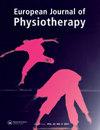Long COVID – respiratory symptoms in non-hospitalised subjects – a cross-sectional study
IF 1.1
Q3 REHABILITATION
引用次数: 2
Abstract
Abstract Background The aim of this study was to describe and analyse the variety of respiratory appearances in Long COVID subjects who were not hospitalised during the acute phase of the infection. Methods A consecutive series of 60 subjects participated 10.8 months (SD 4.5) after the acute phase of the infection. Respiratory function was tested concerning lung volumes, expiratory flow, muscle strength, physical capacity including concurrent oxygen saturation, chest expansion, lung sounds, pain and breathing pattern. Differences between those with or without positive test and duration of symptoms more or less than 6 months were analysed with T-test, Chi-square test and Fisher’s exact test. Results Decreased forced vital capacity was found in 6/60 (10%), and forced expiratory volume in 1 s and 7/60 (12%), low maximal inspiratory pressure in 38/58 (54%) and low maximal expiratory pressure in 10/58 (17%). Decreased physical capacity was registered in 36/52 (69%), and thoracic expansion in 26/46 (56%). Pathologic lung sounds had 15/58 (26%) and six patients desaturated during the test of physical capacity. A majority (36/58, 67%) presented pain in the ribcage. All but three patients (95%) showed a dysfunctional breathing pattern in sitting and standing. Only poor and fair correlations were found between age, duration and level of physical capacity compared to spirometry, respiratory muscle strength and thoracic expansion. Conclusion Abnormal breathing pattern and respiratory movements as well as pain, and reduced lung volumes, flow, respiratory muscle strength, physical capacity and thoracic expansion may be involved in Long COVID. The breathing symptoms should therefore be looked for in a wider picture beyond spirometry and oximetry.长期COVID -非住院受试者的呼吸道症状-一项横断面研究
摘要背景本研究的目的是描述和分析在感染急性期未住院的Long COVID受试者的各种呼吸道表现。方法连续60名受试者参加10.8 感染急性期后数月(SD 4.5)。呼吸功能测试包括肺容量、呼气流量、肌肉力量、体力,包括同时血氧饱和度、胸部扩张、肺部声音、疼痛和呼吸模式。用T检验、卡方检验和Fisher精确检验分析了阳性或非阳性者与症状持续时间大于或小于6个月之间的差异。结果用力肺活量下降6例(10%),用力呼气量下降1例 s和7/60(12%)、38/58为低最大吸气压(54%)和10/58为低最大呼气压(17%)。36/52例(69%)出现体力下降,26/46例(56%)出现胸腔扩张。病理性肺部声音有15/58(26%),6名患者在体能测试中不饱和。大多数(36/58,67%)表现为胸腔疼痛。除三名患者(95%)外,其余患者在坐姿和站立时均表现出呼吸功能紊乱。与肺活量测定、呼吸肌肉力量和胸廓扩张相比,年龄、持续时间和体力水平之间的相关性较差且尚可。结论长期新冠肺炎可能与呼吸方式和呼吸运动异常、疼痛、肺容量、流量、呼吸肌力量、体力和胸廓扩张减少有关。因此,呼吸症状应该在肺活量测定和血氧测定之外的更广泛的范围内寻找。
本文章由计算机程序翻译,如有差异,请以英文原文为准。
求助全文
约1分钟内获得全文
求助全文

 求助内容:
求助内容: 应助结果提醒方式:
应助结果提醒方式:


